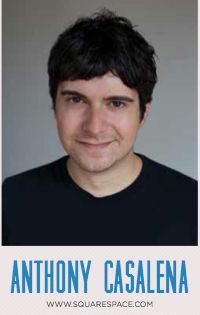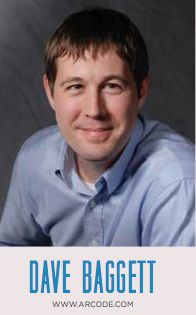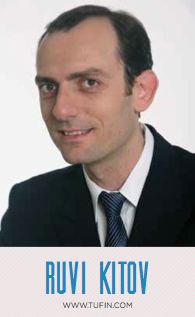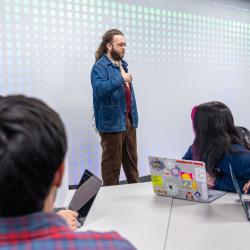Top Tech Companies Have CMNS Connection
Google. It may be the most famous company with roots in CMNS (co-founded by Sergey Brin, B.S. ’93, Mathematics and Computer Science), but it is only one of many successful business ventures created by alumni. In the Department of Computer Science alone, dozens of graduates have launched start-ups that have matured into viable, widely recognized businesses that employ thousands of talented employees in the state, the region and nationwide. Meet five distinguished computer science alumni who are making their mark on the tech world.
Anthony Casalena
Web Site Creation 101
Launched from a University of Maryland dorm room in 2003 by then 21-year-old Anthony Casalena, B.S. ’05, Computer Science, Squarespace has grown into a multi-million dollar business offering software that powers tens of thousands of websites worldwide.
For the past three years, Inc. magazine named Squarespace one of the 500 fastest growing companies.
It all began when Casalena, frustrated that he could not find a product to help him build his personal website, decided to create his own software. “I began to see it as a viable business opportunity as I met more people who felt that Squarespace solved similar issues for them,” he says.
Casalena honed his business skills through the university’s Hinman CEOs program, where entrepreneurial-minded students live and learn together. His company recently launched Squarespace 6, an all-new platform that offers mobile-ready template designs and the Layout- Engine page-building system, allowing users to build more complex layouts.
Pooja Sankar
A New Tool to Connect Classmates
The time is 2 a.m., and you are struggling with your college homework. Thanks to the social learning network Piazza, help is just a click away. The brainchild of Pooja Sankar, M.S. ’04, Computer Science, Piazza connects classmates and provides an online forum to discuss the sticky points of course assignments.
Sankar’s own experiences as an undergraduate at the Indian Institute of Technology spurred the firm’s creation. “I would be up all night by myself trying to get my code to compile,” she recalls. “It was isolating and frustrating.”
Fast-forward to 2009 when Sankar, then a seasoned software developer for Facebook, decided to create a platform to help the next generation of students. She turned to her former instructor, Computer Science Professor David Mount, to test the prototype with his classes at the University of Maryland. Since the product launch in 2011, some 250,000 students at more than 500 schools have used Piazza to connect with classmates.
Dave Baggett
Intelligent E-mail
Dave Baggett, B.S./B.A. ’92, Computer Science and Linguistics, is on a mission to make e-mail smarter. An expert in artificial intelligence, Baggett already revolutionized online travel searches with ITA Software, which he and his partners sold to Google in 2011 for $730 million. Now his Arcode Corporation’s Inky e-mail reader, currently in beta tests, promises to help the average person overcome e-mail overload.
“E-mail reader programs to date have all been dumb,” says Baggett. “They sort and filter at a very superficial level. Inky understands what the messages are about and ranks their level of importance.”
Getting computers to understand human language has long fascinated Baggett, who studied computational linguistics in the doctoral program at the Massachusetts Institute of Technology (MIT). In 1994 he left MIT’s Artificial Intelligence Laboratory to join video game company Naughty Dog, where he co-developed the Crash Bandicoot series for Sony Playstation before joining MIT classmates to co-found ITA Software. Says Baggett, “My computer science education at Maryland taught me how to analyze problems logically and mathematically, preparing me to tackle the big problems.”
Ruvi Kitov
Computer Security Solutions
A part-time job building a website for a professor sparked Ruvi Kitov’s interest in computer security when he was a freshman, eventually inspiring him to launch what would become the leading provider of security policy management solutions. “I started learning about encrypted communications and secure transactions—which were very new at the time,” says Kitov, B.S. ’97, Computer Science. “Always a lover of spy novels, I was instantly intrigued.” Later, an upper-level course in computer networking further confirmed his interest.
After college, Kitov moved to Israel, landing a job at Checkpoint Software, the leader in the firewall market. In 2003, he and a colleague struck out on their own, launching Tufin. The company’s flagship solutions, SecureTrack and SecureChange, help network security engineers at global organizations manage complex systems of firewalls, routers and switches, as well as comply with regulatory standards and prepare for security audits.
“In the early days, we were living on the edge financially and learning on the fly as we built the company,” recalls Kitov. Today, Tufin serves more than 1,000 corporate clients worldwide.
Jin Kang
Crime-Solving Technologies
Law enforcement agencies around the world have solved countless crimes thanks to the work of Jin Kang, B.S. ’86, Computer Science, and the information technology company he founded, iSYS, LLC. A leader in forensic informatics, iSYS helped develop the FBI’s Combined DNA Index System (CODIS), which searches for matches to DNA evidence recovered from a crime scene. The company also specializes in information assurance and is the leading provider of telecom expense management services to the U.S. federal
 government, which have saved them $150 million in telecommunications costs to date.
government, which have saved them $150 million in telecommunications costs to date.
Kang founded iSYS in 1999 after working in software development for defense contractors SAIC and Northrop Grumman. “As a programmer, you often play a small part in building a large application. I wanted to accomplish more,” says Kang. “With iSYS, I look at the bigger picture and have a larger impact in the final product.” After growing annual revenues to $24 million, Kang sold iSYS in 2008 to WidePoint Corporation and continues to serve as president of the subsidiary. “My experiences at Maryland were invaluable in helping me succeed in computer programming, which served as a springboard in starting iSYS.”











